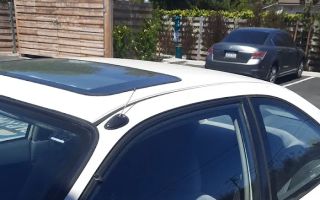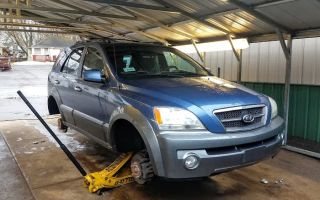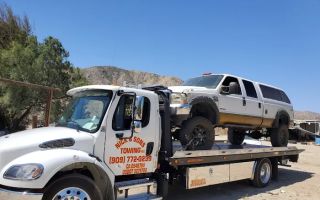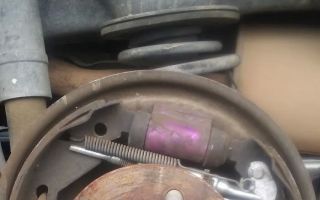Tips for Jumpstarting a Car in Extreme Weather: A Personal Guide
1. Introduction to Jumpstarting in Extreme Weather
It was one of those freezing mornings when I found myself sitting in my car, staring at the dashboard, and realizing that the engine just wouldn’t turn over. It’s frustrating, especially when you’re in a rush and the temperature outside is well below freezing. It’s a scenario that many of us have faced: a dead battery in extreme weather. While it’s a situation no one wants to deal with, knowing how to jumpstart your car properly during extreme conditions can save you a lot of time and frustration. I’ve had my share of experiences jumpstarting my car in cold weather, and I’ve learned a lot along the way. Here’s what I’ve gathered to make this process safer and more efficient, no matter the temperature.
2. How Extreme Weather Affects Your Car Battery
Before diving into how to jumpstart your car, it’s essential to understand how extreme weather – especially cold temperatures – affects your car’s battery. On those cold winter mornings, I’ve often found that my car refuses to start because the battery is simply too cold to function properly. Here’s why:
- Cold temperatures reduce battery efficiency: When the temperature drops, the chemical reactions inside a car battery slow down, which reduces its ability to hold and deliver a charge. In extremely cold temperatures, the battery’s voltage can also drop significantly, making it harder for your car to start.
- Thicker oil puts extra strain on the engine: In cold weather, the oil in your engine thickens, which requires more power from the battery to get the engine moving. This added strain can be the tipping point for a battery that’s already weak or partially drained.
- Increased electrical demand: When it’s cold, you’re likely running the heater, defroster, and possibly even the seat warmers. All of this additional electrical demand can drain the battery faster, especially if it’s already not in great condition.
If your battery is already on the older side or if it hasn’t been properly maintained, you’re more likely to run into problems in extreme weather conditions. I’ve learned to always keep an eye on my battery’s health during the colder months to avoid unexpected issues.
3. Preparing to Jumpstart Your Car in Extreme Weather
One of the most important things I’ve learned when dealing with jumpstarting in extreme weather is the need for preparation. Whether it’s freezing rain, snow, or just below-freezing temperatures, jumping a car in these conditions requires more care than in milder weather. Over time, I’ve developed a checklist that helps me stay prepared and get the job done safely:
- Have the right equipment: Always keep a set of jumper cables in your car, ideally with heavy-duty clamps that can handle the cold and stay in good contact with the battery terminals. I also recommend investing in a portable jump starter, especially if you’re in an area with frequent extreme weather. This backup device can be a lifesaver when there’s no one around to help you jumpstart your car.
- Know where the battery is located: In some vehicles, the battery can be tucked away in hard-to-reach places. Before extreme weather hits, take the time to locate your car’s battery and familiarize yourself with the process of accessing it. It’ll save you precious time when you’re dealing with freezing temperatures.
- Wear proper clothing: Extreme weather means dealing with cold hands and fingers, so I always make sure to wear warm gloves that still allow me to grip jumper cables or a jump starter. A good coat and thermal gear are also essential to avoid losing body heat while working under the hood.
Proper preparation ensures that you don’t waste time and energy fumbling around in the cold when you need to act quickly. I’ve made this mistake before, and trust me, it’s frustrating when you’re in a rush and can’t get your car started right away.
4. Step-by-Step Guide to Jumpstarting Your Car
Now that you’re prepared, here’s the step-by-step process I follow when jumpstarting a car in extreme weather. Over the years, I’ve developed a routine that’s quick, safe, and effective:
- Step 1: Ensure both vehicles are parked safely: Make sure both vehicles are parked close enough so the jumper cables can reach both batteries, but not so close that the cars are touching. I always put both vehicles in park and engage the parking brake. If the temperature is dangerously low, it’s better to avoid running the risk of freezing the car doors or tires to the ground.
- Step 2: Turn off all electronics: Before connecting the jumper cables, I make sure both cars have all electronics (lights, radio, heater, etc.) turned off. This reduces the strain on the battery and ensures the jumpstart is as efficient as possible.
- Step 3: Attach the jumper cables correctly: I always start by connecting the positive (red) cable to the positive terminal of the dead battery. Then, I connect the other end of the red cable to the positive terminal of the working battery. Afterward, I attach the negative (black) cable to the negative terminal of the working battery. Finally, I connect the other end of the black cable to an unpainted metal part of the dead car (away from the battery) to ground the circuit.
- Step 4: Start the working car: Once the cables are securely attached, I start the working car and let it run for a few minutes to allow the dead battery to charge. I’ve found that running the working car for 5-10 minutes before attempting to start the dead car is usually enough.
- Step 5: Attempt to start the dead car: After allowing the working car to charge the dead battery, I try starting the dead car. If it doesn’t start right away, I give it a few more minutes and try again. In my experience, patience is key. If the car still won’t start after several attempts, it’s time to reassess whether the issue is with the battery or another component of the car.
- Step 6: Remove the cables safely: Once the car starts, I remove the jumper cables in the reverse order: black cable from the grounded metal, black cable from the working battery, red cable from the working battery, and finally, the red cable from the dead battery. I always make sure the clamps don’t touch each other during this process.
By following these steps, I’ve successfully jumpstarted my car during extreme weather situations. It’s a straightforward process, but in freezing conditions, it’s critical to take your time and follow the steps carefully to ensure both your safety and the health of your car.
5. Tips to Avoid Needing a Jumpstart in Extreme Weather
While jumpstarting can get you back on the road quickly, the best solution is to prevent the issue from happening in the first place. Over the years, I’ve adopted a few key strategies to help avoid battery failure in extreme weather:
- Maintain your battery: I make sure to have my battery tested regularly, especially before winter hits. A healthy, fully charged battery is less likely to fail in extreme weather. I also clean the battery terminals and check for signs of corrosion.
- Use a battery blanket: In extremely cold conditions, I’ve found that using a battery blanket can keep the battery warm and prevent freezing. These inexpensive covers wrap around your battery and help maintain a stable temperature.
- Drive regularly: I make it a habit to drive my car regularly, even in the winter, to keep the battery charged. Short trips, especially in cold weather, can drain the battery without giving it a chance to recharge.
By following these tips, I’ve minimized the chances of needing to jumpstart my car in the first place. Preventing battery failure is the best way to avoid a stressful situation in extreme weather conditions.
6. Conclusion
Jumpstarting a car in extreme weather can be challenging, but with the right preparation and knowledge, it’s a task that can be handled safely and efficiently. Whether you’re dealing with a freezing morning or a snowstorm, understanding how to jumpstart your car properly ensures that you’re ready for anything. Always take the time to maintain your battery and stay prepared, so you can avoid unnecessary stress when the weather turns harsh.


























